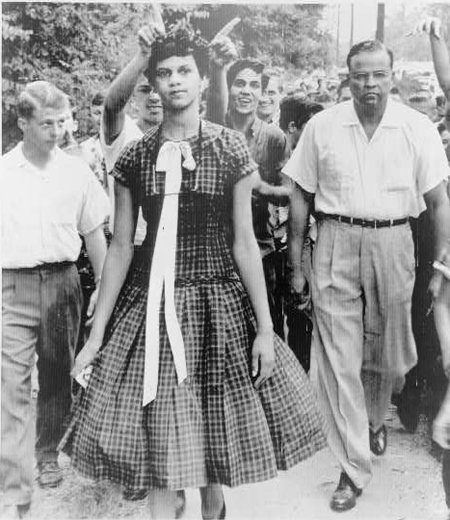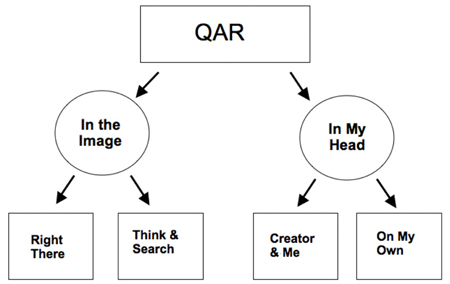Connecting to the Common Core: Image Questions & Responses

Questioning & the Common Core State Standards
The Common Core State Standards (CCSS) for Reading emphasize teaching students to become active questioners beginning in kindergarten.
- RL/RI.K.1. With prompting and support, ask and answer questions about key details in a text.
- RL/RI.1.1. Ask and answer questions about key details in a text.
- RL/RI.2.1. Ask and answer such questions as who, what, where, when, why, and how to demonstrate understanding of key details in a text.
- RL/RI.3.1. Ask and answer questions to demonstrate understanding of a text, referring explicitly to the text as the basis for the answers.
By 4th grade, specific practice with questioning disappears from the CCSS standards text.
- RL/RI.4.1. Refer to details and examples in a text when explaining what the text says explicitly and when drawing inferences from the text.
Question-Answer Relationships (QAR)
One way to help students become active questioners is to use the Question-Answer Relationships (QAR) framework developed by Taffy E. Raphael (1982, 1986). Briefly, QAR helps students increase reading comprehension by recognizing different types of questions and understanding where the answers to those questions can be found.
QAR → Image Questions and Responses
TPS-Barat has adapted Dr. Raphael’s QAR framework to primary source image analysis, providing teachers with an approachable, scaffolded learning activity that focuses on comprehension of content while reducing linguistic cognitive load. Once students have mastered key questioning and thinking skills using images, they can more easily apply these skills to texts, combining reading comprehension with oral or written expression.
In the Image
- Right There – Literally, “What do I see?” This question relates to explicit information present in the image. Responses should lead to objective statements.
- Think & Search – These questions require you to think about how certain details in an image relate to one another and to the image as a whole. Responses should summarize or explain how the details add to the information, story, or idea presented by the image.
In My Head
- Creator & Me – These questions require you to make inferences as you consider the purpose of the creator in presenting information or ideas in the particular way that s/he did. Responses should point to particular details, techniques, or both, that support your thinking.
- On My Own – These questions focus on making personal connections to the image based on your own experiences and knowledge. They also ask you to draw conclusions and consider what more you would like to learn. Responses should help you move beyond the information, story, or idea presented in the image and find personal relevance to the content.
Image Questions & Responses Chart
| IN THE IMAGE | |||||||||||||||||||
|
|
||||||||||||||||||
| IN MY HEAD | |||||||||||||||||||
|
|
||||||||||||||||||
Please feel free to download and distribute the Image Questions & Responses chart (but please keep the format, including logos, intact).
For more on QAR, see: Raphael, T. E., & Au, K. H. (2006). QAR Now: Question Answer Relationships. New York: Scholastic.
Related PSN posts
Connecting to the Common Core: Analyzing Primary Source Images
Connecting to the Common Core: Close Reading Markup Strategies
Connecting to the Common Core: Image Sequencing Activities
Connecting to the Common Core: Primary Source Investigations
Connecting to the Common Core: Primary Source Thinking Triangle Activity
Connecting to the Common Core: Purposeful Questions & Close Observation

